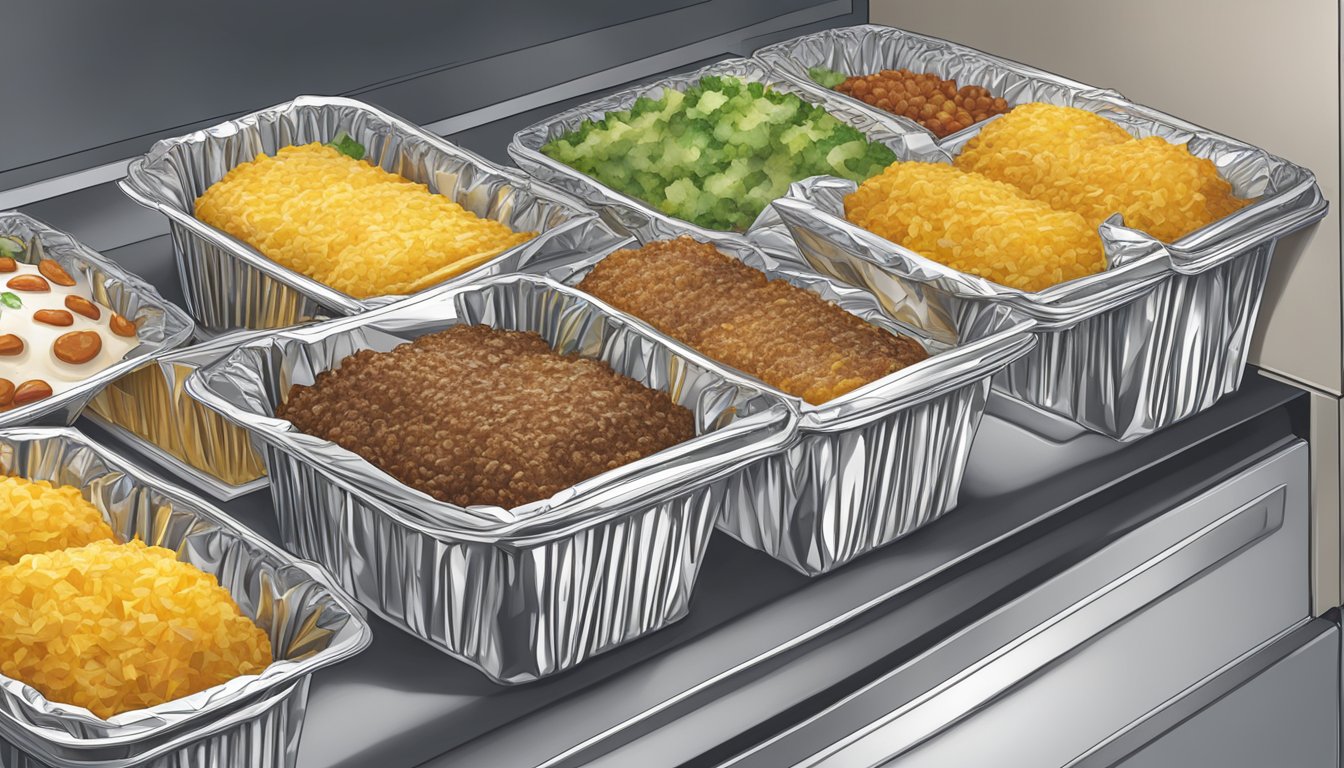Breakfast tacos are a delicious and convenient meal option, but sometimes we make more than we can eat in one sitting. The good news is that these tasty creations can indeed be stored for future enjoyment. Breakfast tacos can be frozen for up to 2-3 months when properly wrapped and stored in airtight containers.
Freezing breakfast tacos is an excellent way to have a quick and satisfying meal ready whenever hunger strikes. This method works well for various types of breakfast tacos, including those filled with eggs, bacon, sausage, or vegetarian options. The key to success lies in proper preparation and storage techniques.
By learning how to freeze breakfast tacos effectively, you can save time on busy mornings and reduce food waste. This article will explore the best practices for freezing, storing, and reheating breakfast tacos to ensure they maintain their flavor and texture.
The Basics of Freezing Breakfast Tacos
Freezing breakfast tacos is a convenient way to prepare meals ahead of time. Proper techniques ensure the tacos maintain their flavor and texture when reheated.
Understanding Freezer Safety for Breakfast Tacos
Freezer safety is crucial when storing breakfast tacos. Use freezer-safe bags or airtight containers to prevent freezer burn. Remove as much air as possible before sealing to maintain freshness.
Wrap each taco individually in foil or plastic wrap before placing in the container. This extra layer of protection helps preserve quality and makes it easier to grab single servings.
Label containers with the date of freezing. Frozen breakfast tacos typically last 1-2 months when stored properly. Always thaw in the refrigerator overnight for food safety.
Selecting Appropriate Ingredients for Freezing
Choose ingredients that freeze well for the best results. Eggs, cheese, bacon, and tortillas are all suitable for freezing. Cook eggs thoroughly and let cool before assembling tacos.
Avoid adding fresh vegetables or sauces directly to tacos before freezing. These can become soggy or watery when thawed. Instead, add salsa, cilantro, or other toppings after reheating.
Use sturdy flour tortillas rather than corn, as they tend to hold up better in the freezer. Slightly undercook bacon to prevent it from becoming too crispy when reheated.
Season with salt and pepper before freezing to enhance flavors. Consider adding cooked potatoes or beans for heartier tacos that freeze well.
Preparation Techniques

Proper preparation is key to successfully freezing breakfast tacos. Careful assembly and packaging ensure the tacos retain their flavor and texture after thawing.
Assembling Breakfast Tacos for Freezing
Start with room temperature ingredients to prevent excess moisture. Use flour tortillas, as they freeze better than corn. Fill each tortilla with scrambled eggs, cooked bacon or sausage, and shredded cheese. Avoid wet ingredients like salsa or sour cream, which can make the tortillas soggy. Don’t overfill – leave room for folding. Fold the tortilla tightly, tucking in the sides to create a secure package. Allow assembled tacos to cool completely before wrapping to prevent condensation.
Proper Wrapping and Packaging
Wrap each taco individually in plastic wrap or aluminum foil. Press out any air bubbles to prevent freezer burn. For extra protection, place wrapped tacos in a freezer-safe bag or airtight container. Label the package with the date and contents. Remove as much air as possible from the bag before sealing. Store tacos flat in the freezer to maintain their shape. For best quality, consume within 2-3 months. When ready to eat, unwrap and microwave for 1-2 minutes or reheat in the oven for a crispier texture.
Freezing Process

Freezing breakfast tacos properly ensures they maintain quality and taste when reheated. The process involves careful preparation, proper layering, and attention to storage conditions.
Layering and Storing in the Freezer
Wrap each breakfast taco individually in aluminum foil or plastic wrap. This prevents freezer burn and keeps ingredients together. Place wrapped tacos in a single layer inside a freezer-safe container or resealable plastic bag. Remove as much air as possible before sealing to prevent ice crystals from forming.
For best results, use airtight containers specifically designed for freezer use. These protect against moisture and odors. If using bags, lay them flat in the freezer to save space and allow for quicker freezing.
Label containers with the date and contents for easy identification. This helps track how long tacos have been frozen.
Duration and Shelf Life Considerations
Properly stored breakfast tacos can last 3-4 months in the freezer. Beyond this time, quality may decline, though they remain safe to eat if kept at 0°F (-18°C) or below.
For optimal taste and texture, consume frozen breakfast tacos within 1-2 months. Ingredients like eggs and cheese may change texture slightly after freezing, but will still be edible.
Check freezer temperature regularly to ensure it stays at 0°F (-18°C) or below. Fluctuating temperatures can affect food quality and safety.
When ready to eat, thaw tacos in the refrigerator overnight. Reheat in a microwave wrapped in a paper towel, or in an oven for a crispier shell.
Reheating and Serving Frozen Breakfast Tacos

Frozen breakfast tacos can be easily reheated and served with minimal effort. Proper thawing and reheating techniques help maintain the quality and taste of the tacos.
Thawing and Reheating Methods
Frozen breakfast tacos can be reheated directly from the freezer or thawed first. For microwave reheating, wrap the frozen taco in a paper towel and microwave for 1-2 minutes. Check the taco and add additional time if needed.
Oven reheating produces better results. Preheat the oven to 350°F (175°C). Place frozen tacos on a baking sheet and heat for 15-20 minutes until warmed through.
For a crispy texture, use a skillet. Heat a non-stick pan over medium heat. Place the thawed taco in the pan and cook for 2-3 minutes per side until crispy and heated through.
Maintaining Quality and Taste
To preserve the quality of reheated breakfast tacos, avoid overheating. This can dry out the tortillas and fillings. If using a microwave, reduce power to 50% for more even heating.
Add fresh toppings after reheating. Salsa, cheese, and other cold ingredients can be added just before serving. This enhances flavor and texture.
Let tacos cool for a few minutes before eating. This allows the fillings to set and prevents burns. Serve with additional salsa or hot sauce on the side for extra flavor.
Customization and Variations

Breakfast tacos offer endless possibilities for personalization. Adapting recipes to dietary needs and experimenting with unique ingredients allows for creative and satisfying meals.
Variations for Different Diets
Vegetarian breakfast tacos provide a delicious meat-free option. Fill tortillas with scrambled eggs, black beans, and sautéed vegetables like bell peppers and onions. For vegan versions, use tofu scramble instead of eggs and omit cheese. Keto-friendly tacos can be made with low-carb tortillas or lettuce wraps.
Gluten-free eaters can enjoy breakfast tacos by using corn tortillas or gluten-free alternatives. Paleo dieters can opt for grain-free tortillas made from almond or coconut flour. High-protein versions might include extra egg whites or lean meats like turkey sausage.
Creative Toppings and Fillings
Experiment with diverse toppings to elevate breakfast tacos. Fresh guacamole adds creamy texture and healthy fats. A dollop of sour cream provides tangy contrast. Refried beans make a hearty addition to any taco.
For meat lovers, try Italian sausage or sausage crumbles for a flavorful twist. Vegetarians can use plant-based sausage alternatives. Incorporate unexpected ingredients like roasted sweet potatoes, crispy kale, or pickled jalapeños for added depth.
Homemade tortillas can take breakfast tacos to the next level. Fresh salsa, pico de gallo, or hot sauce adds a spicy kick. Crumbled queso fresco or shredded cheddar cheese enhances flavor and texture.
Nutritional Considerations

Breakfast tacos offer a balance of macronutrients and can be customized to meet various dietary needs. Their nutritional profile depends on the ingredients used and portion sizes.
Analyzing Caloric and Nutrient Content
A typical breakfast taco contains approximately 200-400 calories. The protein content ranges from 10-15 grams per taco, primarily from eggs, cheese, and meat fillings. Carbohydrates from tortillas provide energy, while vegetables add fiber and micronutrients.
Fat content varies based on ingredients like cheese and meats. Saturated fat can be reduced by choosing lean proteins or plant-based options. Sodium levels may be high, especially in prepared versions.
Calcium and iron are often present due to dairy and meat ingredients. Vitamins A and C can be boosted by adding vegetables like peppers and spinach.
Balancing a Healthy Diet with Convenient Options
Meal prep breakfast tacos can be part of a balanced diet when portion sizes are controlled. Opt for whole grain tortillas to increase fiber intake. Include a variety of vegetables to enhance nutritional value without significantly increasing calories.
For a healthier frozen option, consider using egg whites or a mix of whole eggs and whites. This reduces cholesterol and fat content while maintaining protein levels. Choose low-fat cheese or omit it to further reduce calorie and saturated fat intake.
Pair frozen breakfast tacos with fresh fruit or a small serving of Greek yogurt to create a more complete meal. This adds essential vitamins, minerals, and probiotics to your breakfast.




